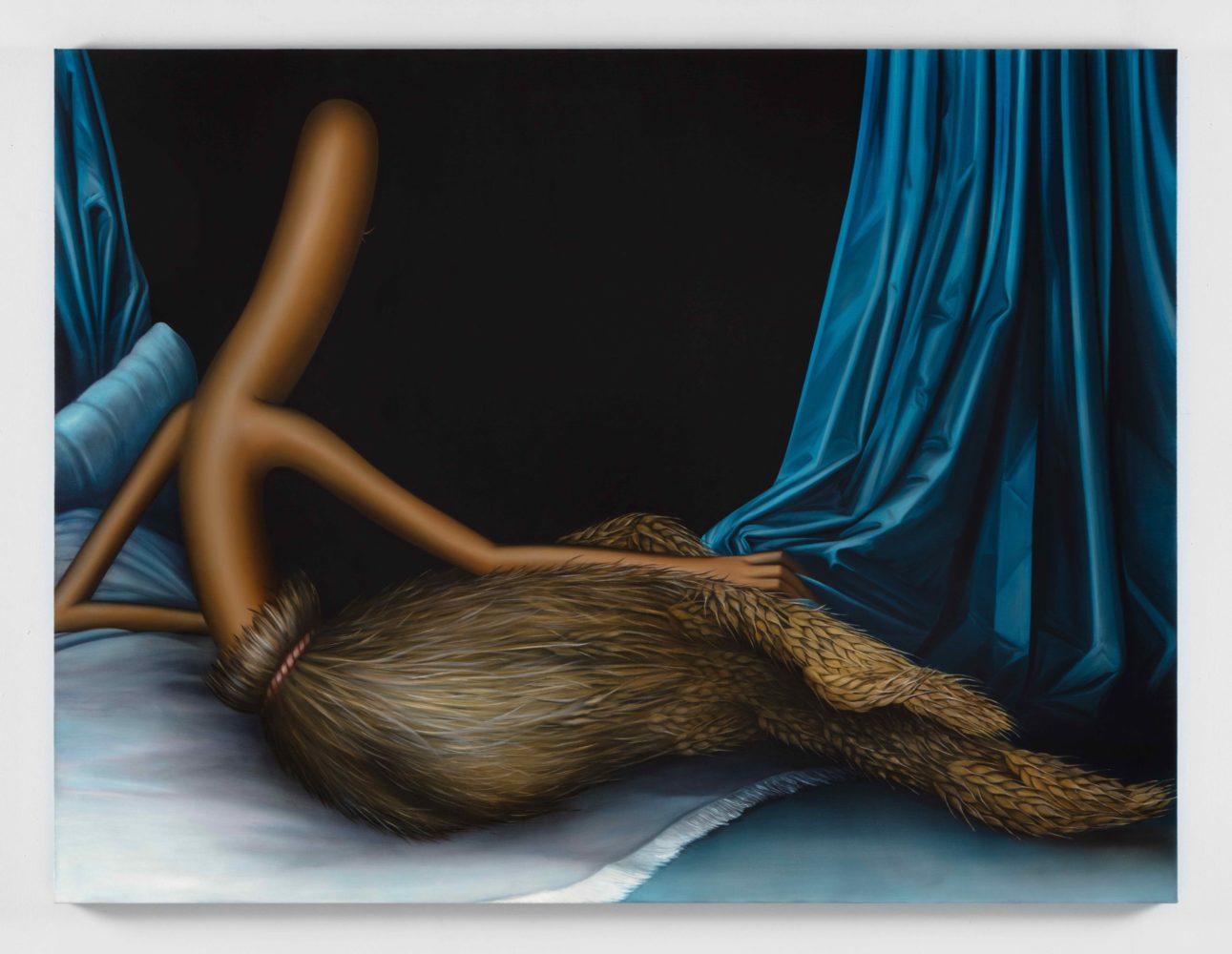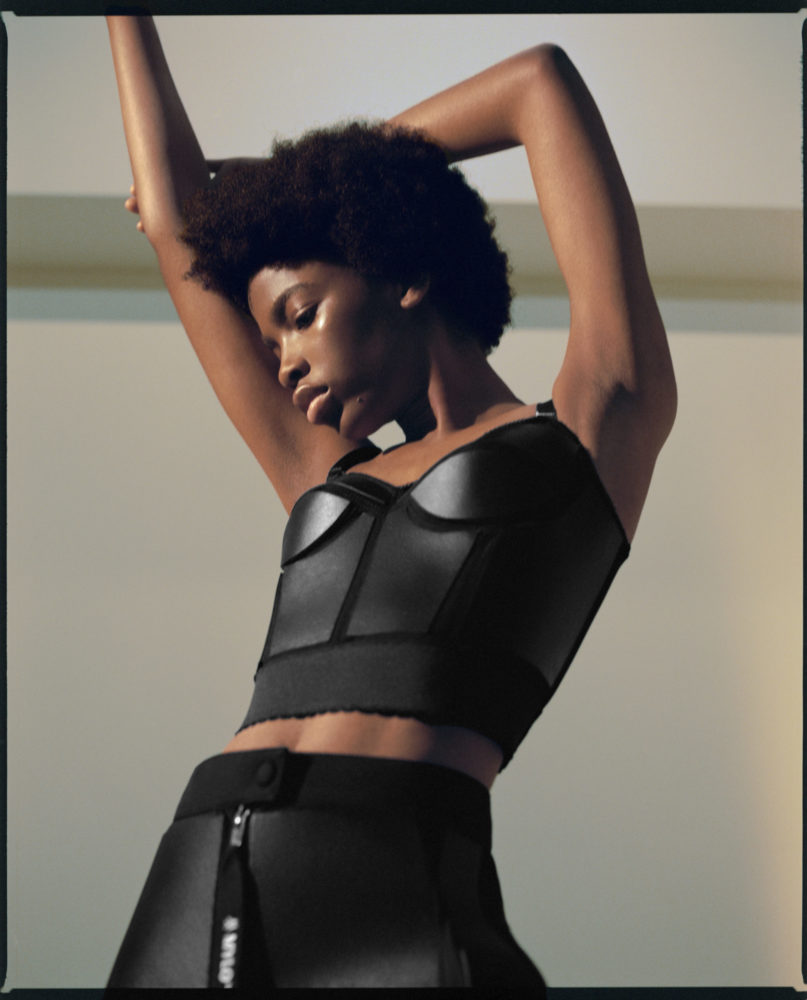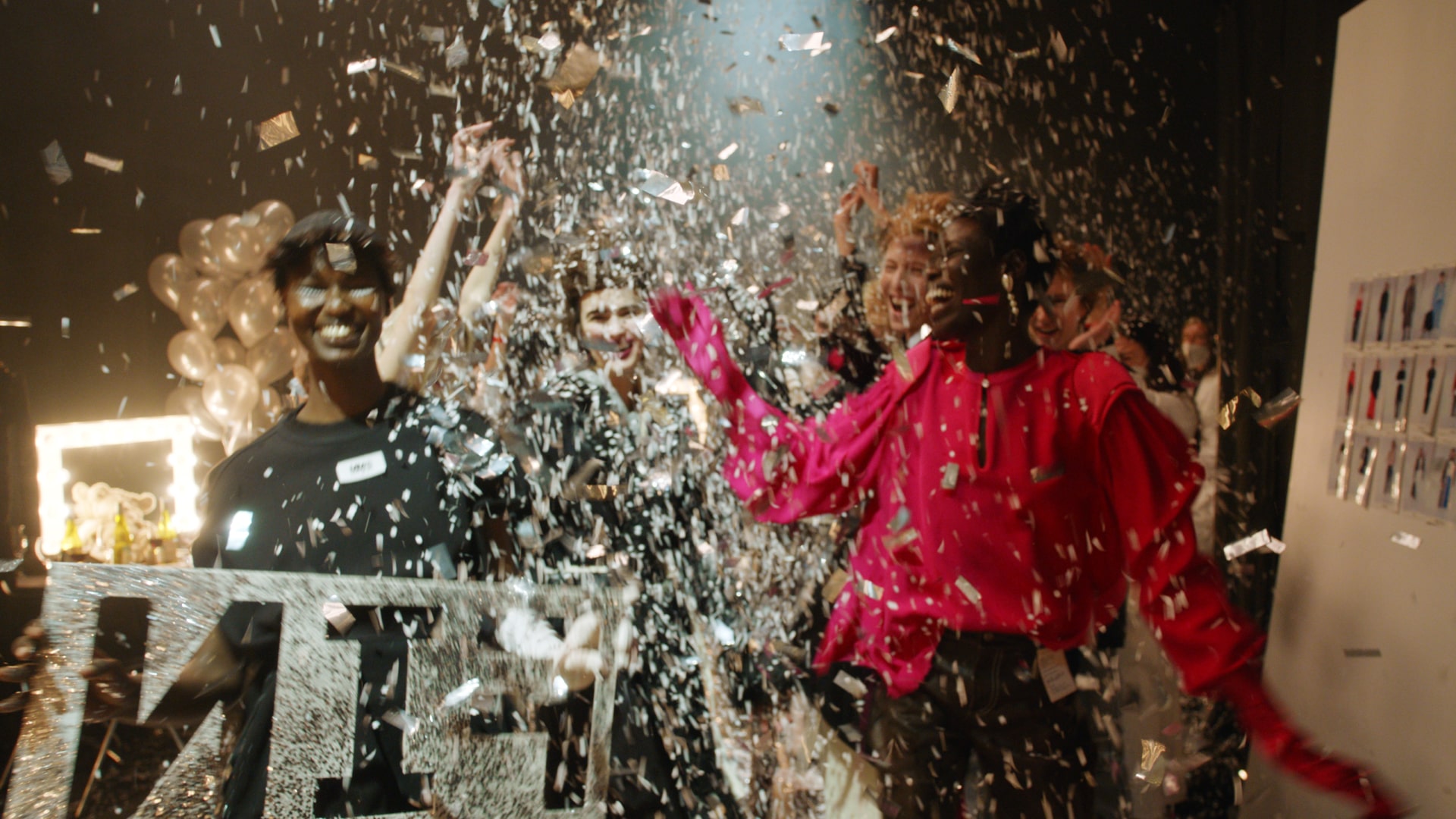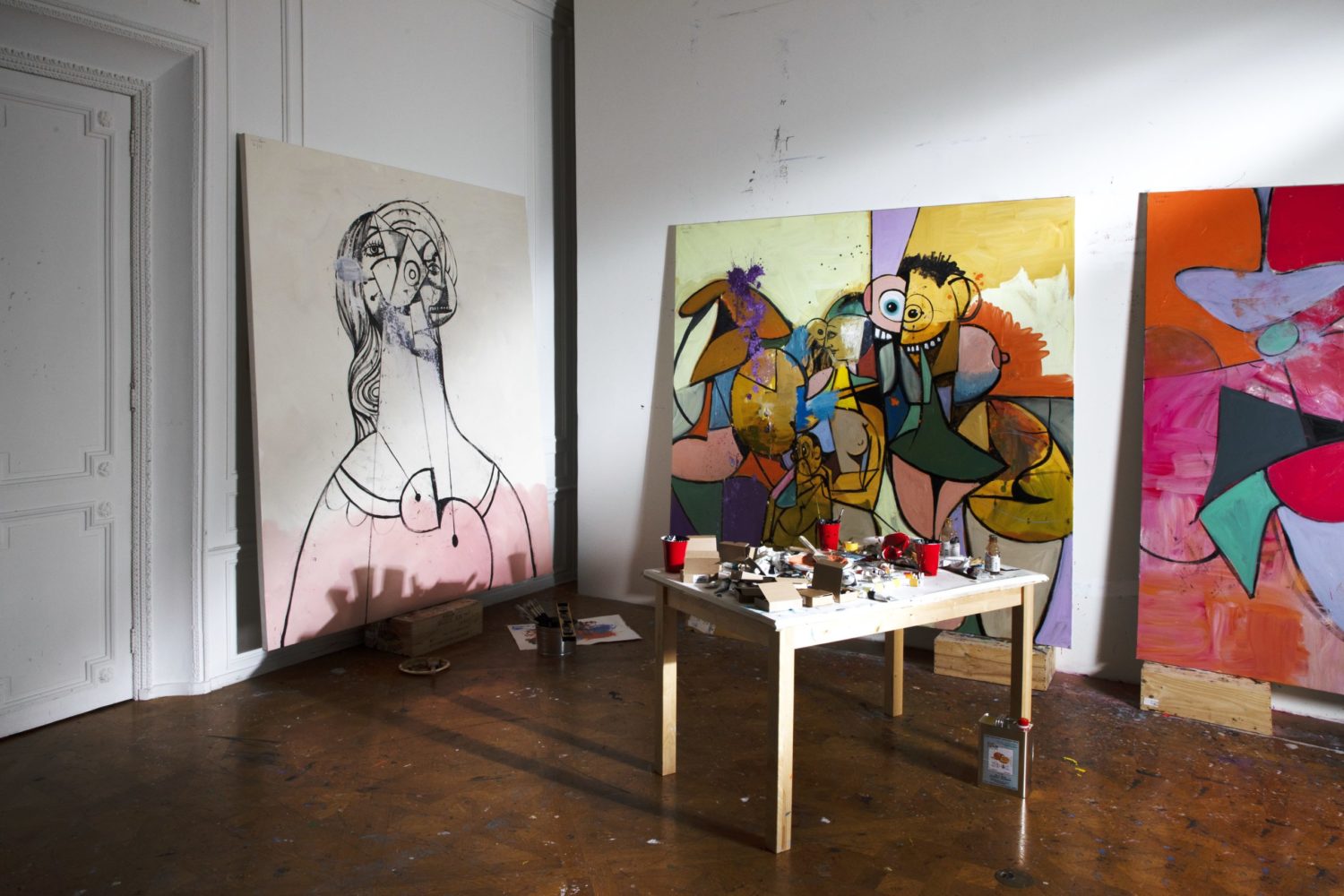Emily Mae Smith’s paintings are full of clues. She uses humor, recurring themes and iconography, and references to the history of painting to lead us into a new understanding of the visual stories we’ve been told. Whether through the figure of the broom to represent labor (visible and invisible), windows that lead to another world, text reading “The Studio,” images of mice scurrying about a wheat field, or even the scale of a particular work, the artist uses painting to explore her own relationship to the medium, and ours.
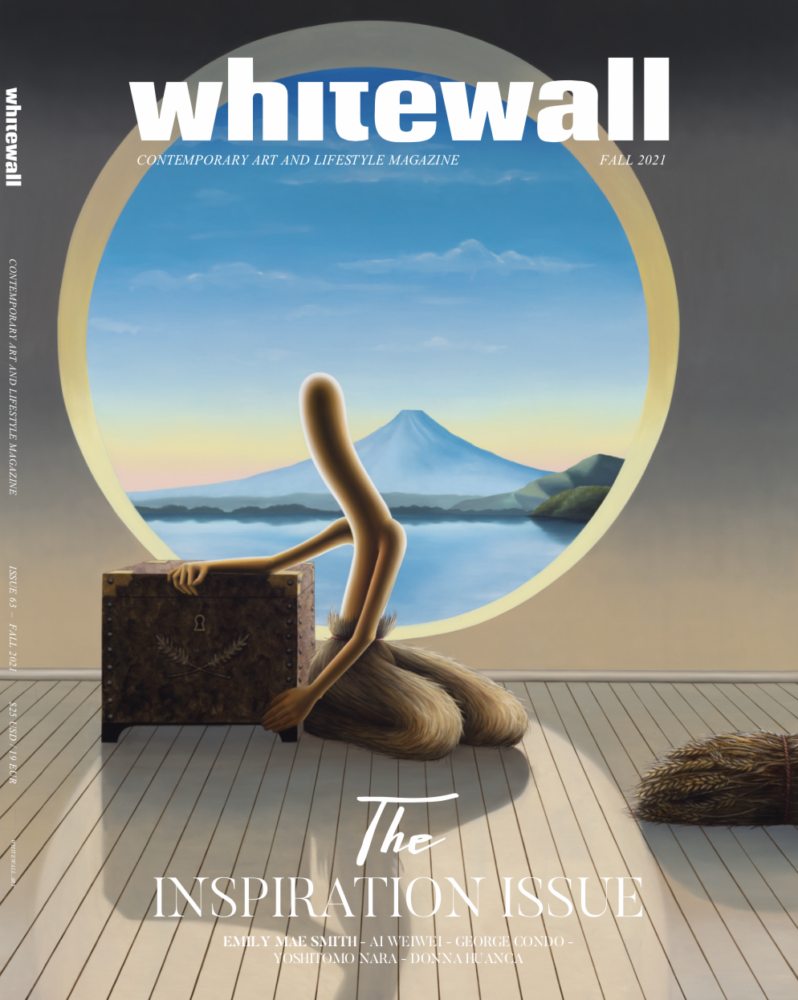
Emily Mae Smith, “The Idle Servant,” 2020, oil on linen, 84 x 67 inches, photo by Charles Benton, courtesy of the artist and Perrotin.
This fall, she’ll show all-new paintings and works on paper at Perrotin in Paris, from pencil drawings to large- and small-scale pieces. As of late, she’s investigated the depiction of laboring women, overwhelmingly in rural settings rather than urban, and how this tradition of imagery has impacted our current culture.
Discussing the tools she employs in her practice, as well as the joy she finds in painting, Smith spoke with Whitewall about the missing pieces and persons in painting.
WHITEWALL: Can you tell us about what’s planned for your show this fall at Perrotin in Paris?
EMILY MAE SMITH: I am exhibiting new paintings and works on paper. The paintings range from very small to quite large. The paper works are both watercolors and pencil drawings. The pencil drawings are from my sketchbooks—the visual origin of all my ideas. It will be nice to exhibit a range of scale and show various levels of process and finish.
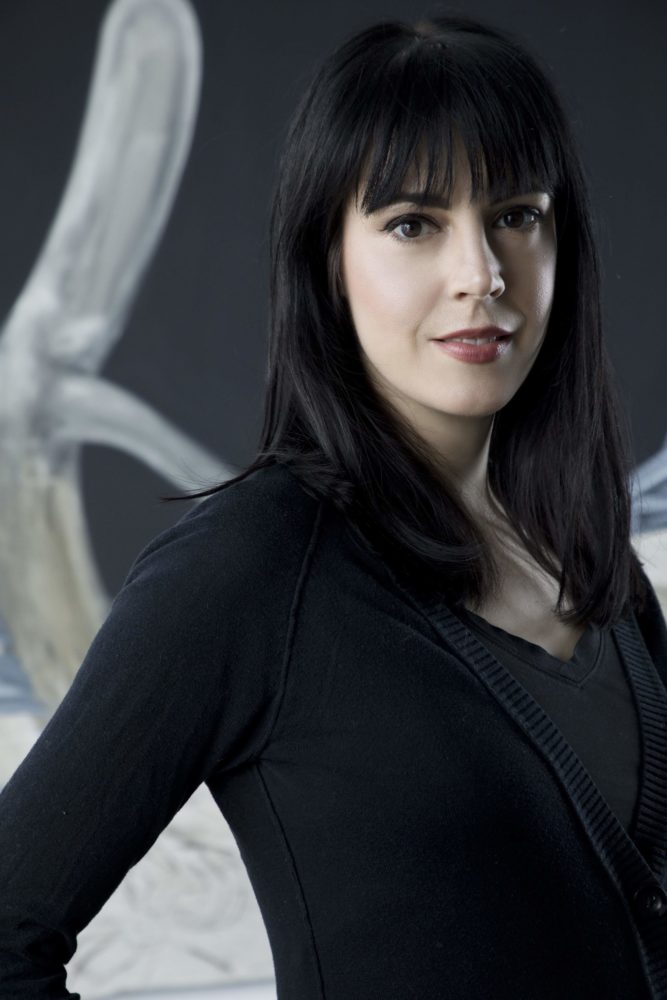
Portrait by Steve Benisty, courtesy of the artist & Perrotin.
WW: Was there a starting point for the show or a particular theme you are exploring?
EMS: I am thinking a lot about painting’s pictorial relationship to labor. For me, this means I’ve been looking at a lot of paintings that show women as either laboring peasants or as idle myths. Jean-François Millet’s painting The Gleaners from 1857 is an example.
WW: Images of wheat, rodents, harvesting, and gleaning have been prevalent in recent works. Will we see some of that imagery appear again?
EMS: Yes, I am definitely still working with that imagery. They are part of this labor and landscape theme I am on.
WW: Is there any new imagery introduced in this body of work?
EMS: At least three of the larger paintings in this show have very dramatic light in them. I have painted that kind of light before, but this exhibition has a heavier concentration. It will be interesting to pair these with some of my smaller paintings that are more graphic and hard-edged.
WW: The broom as a figure and tool for communication has been a part of your paintings for several years. What about the broom keeps you coming back to it? Why do you think it’s such an effective tool?
EMS: It is the equivalent of a mental model to use in my exploration of painting. As I explore my relationship to the story of painting, the body of the broom becomes that story. As it unfolds, I find new unexamined dimensions. When I started to paint the legs as straw I wondered about that. Then I found myself examining the historical paintings of peasant life working with fields of grain, thinking about what those paintings mean in patriarchal society, and how that has set up models resulting in conditions like invisible labor. It is an effective model.
WW: In recent works, the broom as a figure has transformed into other shapes—like candles, an apple . . .. How do you see the broom as also a kind of shapeshifter?
EMS: It is not really a recent event. I have always painted a variety of themes and images as well as painting styles. They are all models for ways of thinking about painting, which is in turn thinking about visual culture and what myths, gifts, and limitations it has given us. I think that is how to find new territory. I have always painted objects in search of a subject that can be clearly grasped yet hold the space for contemplation and discovery.
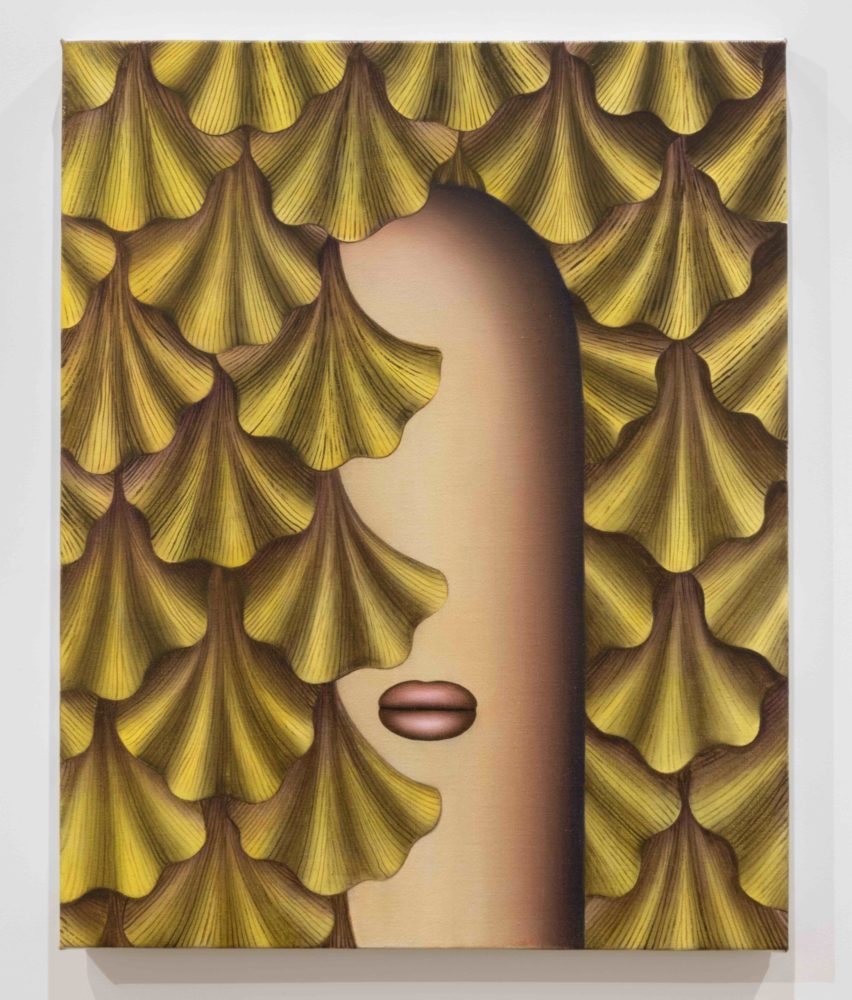
Emily Mae Smith, “The Space Between,” 2021, oil on linen, 20 x 16 inches, photo by Adam Reich, courtesy of the artist and Candice Madey Gallery.
WW: You’ve described the broom as an agent, or an interloper in art history. Are there art-historical references, mediums, or moments we’ll find the broom this time around?
EMS: Serendipitously, I have been thinking a lot about paintings from the French tradition. As I mentioned before, Millet’s The Gleaners has been on my mind, though you will not see it literally depicted. I see some of my painting protagonists as gleaners of the visual landscape (i.e., painting history), rather than fields of grain. I have also been looking at the academic painter Jules Joseph Lefebvre. I am also thinking about Monet. These paintings were extremely out of fashion during the modern era. There are Flemish genre paintings and textiles from my personal collection on my mind as well. Plant and vegetal life is really significant to me, too.
WW: What kind of magical thinking is it exploring?
EMS: I am wondering if we can reexamine the script given to us about images like the peasant and the maid. What if she existed for her own pleasure? What if working was respected and not derided? Why are plants so awesome?
WW: The broom’s face is used as a portal to other, unreal worlds. What kinds of otherworldly spaces are you imagining at the moment? Is the broom seeing or showing us?
EMS: This show is not using the face motif much. However, there is imagery of the eye liberated from the body. In one painting an eyeball sits where a globe would normally be. The eye is a roving independent searcher. There is a tension of being looked at versus doing the looking.
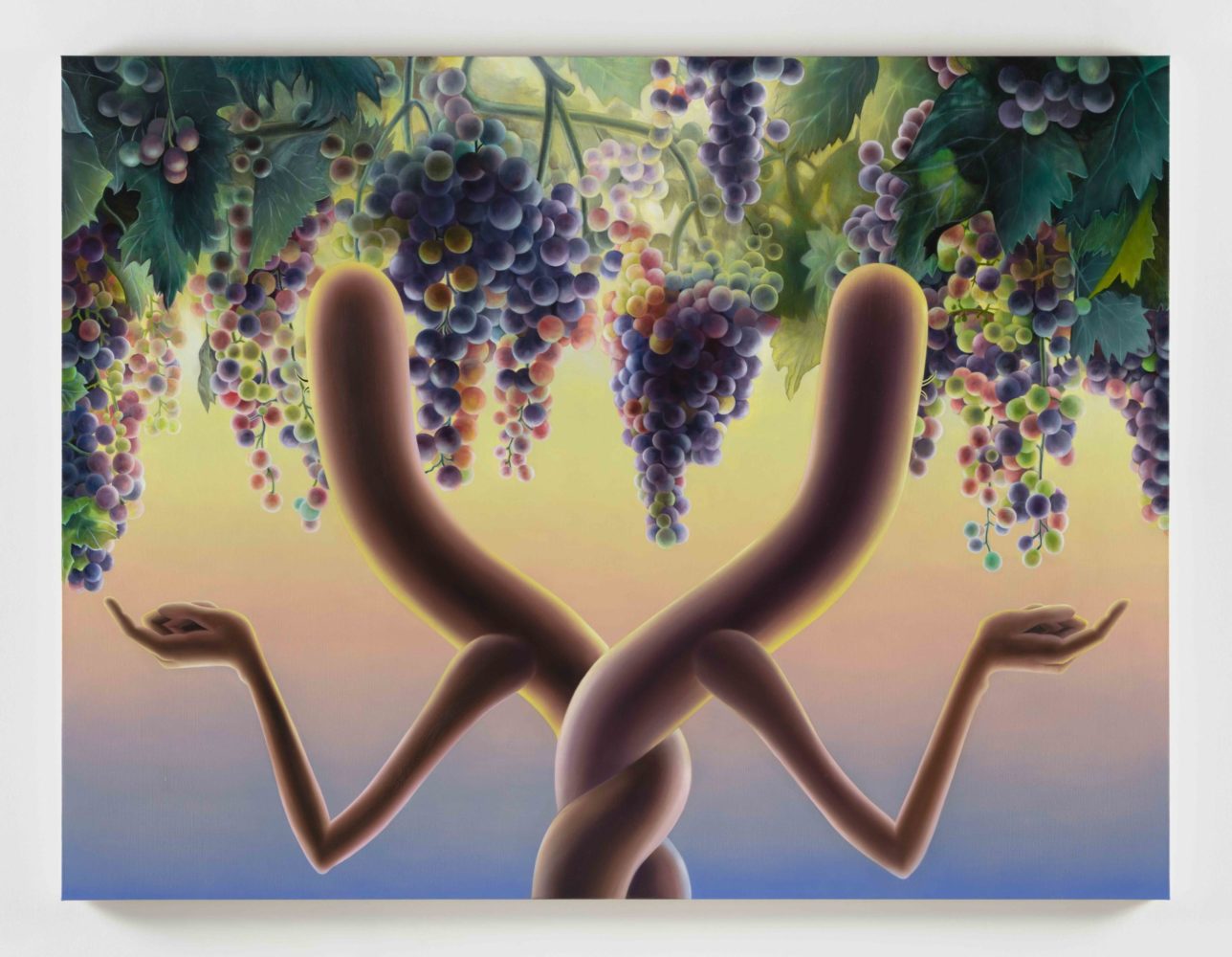
Emily Mae Smith, “The Gleaner and Me,” 2019, oil on linen, 51 x 67 inches, © courtesy of the artist & Perrotin.
WW: You’ve talked about choosing the scale of a work based on the needs or emotions you want to convey in a work. How are you thinking about scale at the moment?
EMS: It is still very important to me to work on a variety of scales, as long as my conditions permit that. The small paintings are just as important as the large ones. People are surprised to hear that the small paintings are harder to make. They have no room for waffling. Back to the topic of the roving eye—I want the scale of the work to encourage that, moving the eye and body around the room to take in the work at different distances. I hope for the show to have no gestalt.
WW: You’ve talked about the influence Magritte has had on you, in particular his lesser-known works on paper. Can you tell us about how you connected with Magritte’s works on paper, and what about them struck you?
EMS: I first saw them on a trip with my partner, Adam, who was doing an exhibition in Brussels. It might have been 2012, I cannot quite remember. We went to the Magritte Museum and saw the gouache-on-paper paintings there—I never saw these before. At that time I was painting mostly on paper at home, and feeling quite stuck and pretty angry in general about life circumstances. These acerbic little gouaches by Magritte were exactly the tone that resonated with me in the moment. They are quite funny, biting, witty, and sometimes sarcastic works.
Not too long after that I was talking with the artist Sean Landers about how great the Magritte works on paper are. It turns out these are also a big influence on Sean, and he had a lot to say about them. He pointed me toward a great book about that series known as the “Période Vache” works. I complained about my difficult working conditions at that time, and he said, “You are making your Période Vache!”
WW: The text “The Studio” appears in several of your paintings. What does that text communicate for you in a painting, and do you like to play around with the font, scale, and placement?
EMS: It is a floating signifier—it depends on the painting or series. Sometimes it points toward the art world, sometimes the artists’ discursive working space. It can even stand in for art history. I definitely like to play with those design elements, similar to an image. Playing with language at the symbolic level is fun.
WW: In your paintings, you’ll reference figures or movements in art history that were looked over, forgotten, never given their due, or that the canon has been “embarrassed by”—asking, what secret relatives are art history keeping in the closet? What might we learn? Have you had any recent discoveries or encounters in that regard that are of note?
EMS: In looking at so many paintings of women working in peasant life, it is striking how few paintings there are of working women in urban life. The existing ones are usually working in brothels. That feels like a clue to a true crime, pointing to some missing pieces or missing persons. That feels honest—the story of painting so far is a missing person’s story.
WW: Humor is a clear touchstone in your paintings, and a device you’ve discussed at length. What role does joy play in your work, and do you see it as related to humor?
EMS: I see humor more like a tool, a behavioral device. Joy is something I experience in my craft. It all starts there. I really enjoy painting.
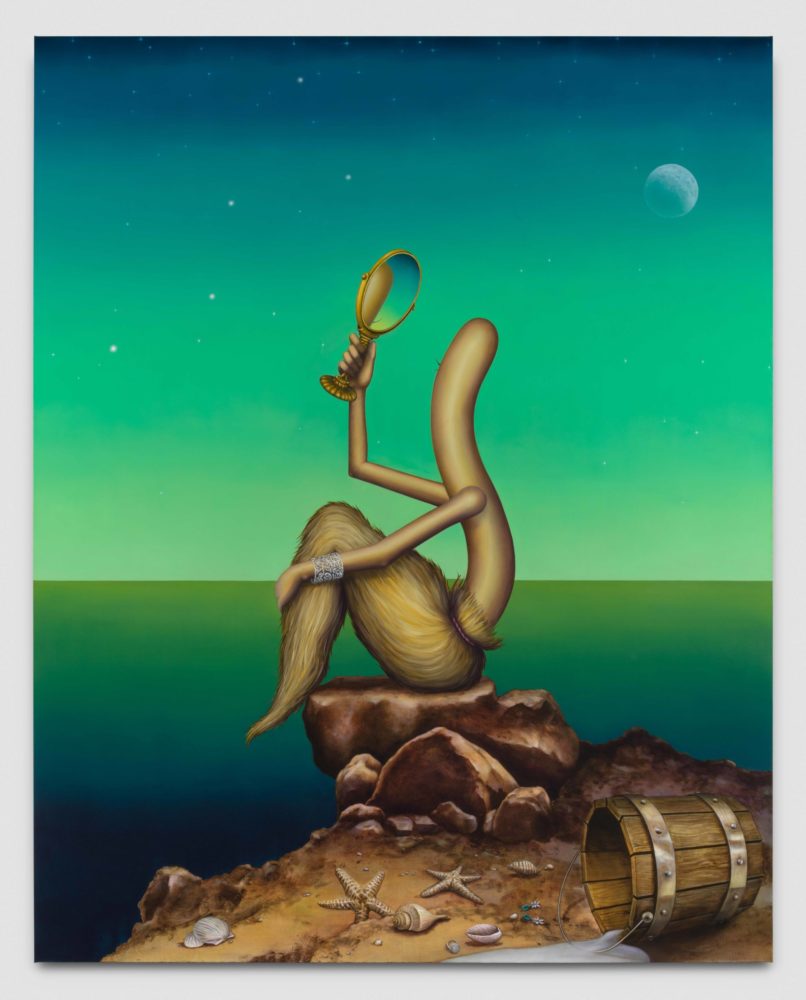
Emily Mae Smith, “Cassiopeia,” 2020, oil on linen, 84 x 67 inches, photo by Charles Benton, private collection, Belgium, courtesy of the artist and Rodolphe Janssen, Brussels.
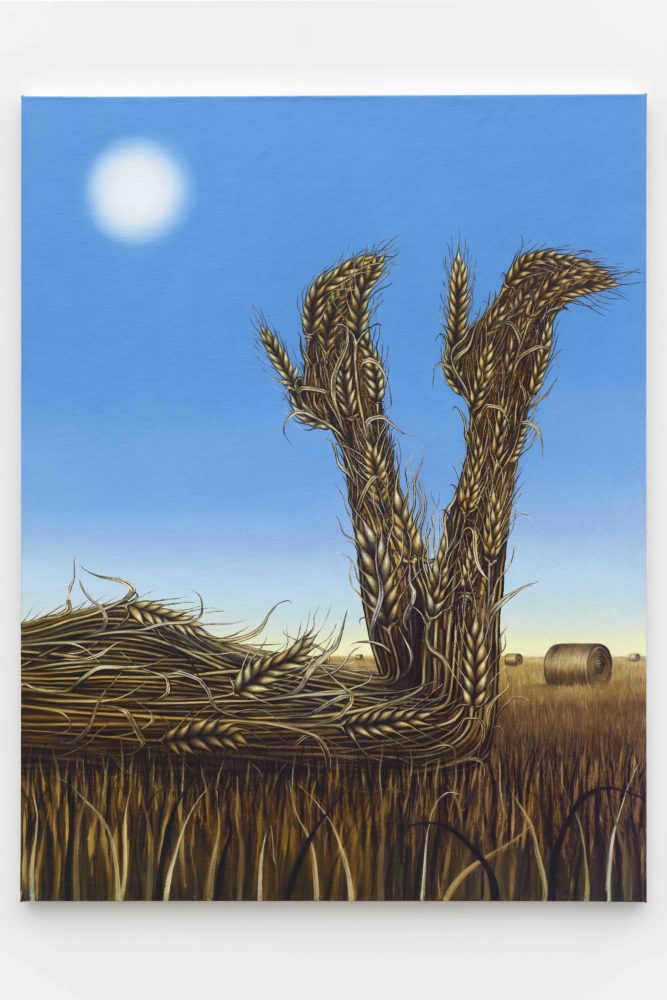
Emily Mae Smith, “Daphne of the West,” 2020, oil on linen, 48 x 37 inches, photo by Thomas Mueller, courtesy of the artist and Perrotin.



